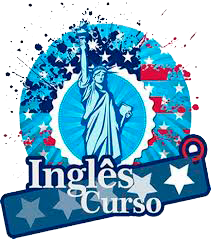Aspas Quotation marks Em inglês, empregam-se as aspas (quotation marks ou inverted commas) no início e no fim de: 1 – Título de um livro, artigo, revista, filme, peça de teatro, etc.: David reads "BusinessWeek" every week. Have you seen "Shrek" yet? Have you ever read "The Day of the Jackal" by Frederick Forsyth? 2 transcrição ou citação: John said he wasn’t "going back there again". Did you say "tree" or "three"? 3 – Palavra ou expressão: What does "paraphernalia" mean? What’s the meaning of "a piece of cake"? 4 – Palavra ou expressão estrangeira: They only have the "à la carte" menu. They don’t have the "table d’hôte". 5 – As aspas são também empregues em discurso direto
Ponto final Full stop Em inglês, o ponto final (full stop) usa-se: 1 no fim de uma frase declarativa completa: I like reading. John opened the door. This is a simple sentence. 2 no fim de uma frase declarativa incompleta: To London. Right away. Never seen her before. 3 nas abreviaturas: i.e. (that is) e.g. (for example) a.m. (in the morning) Dr. (Doctor) Rd. (Road) U.S.A. (United States of America) 4 em decimais: .125 0.125 3.14 6.5 metres £10.45 NOTA: Quando uma frase declarativa termina com uma abreviatura, utiliza-se apenas um ponto final no fim da frase: John has an M.A. (1) (1) M.A. = Master of Arts (mestrado em letras)
Ponto de interrogação Question mark Em inglês, o ponto de interrogação (question mark): 1 usa-se no fim de uma frase interrogativa directa: Do you like reading? Would you like a cup of tea? What time is it? Where are you from? 2 usa-se em discurso directo: He asked, "Do you like fishing?" "Do you like cooking?" he asked. "Have you seen Jane?" he asked. 3 não se usa com ponto final no fim de uma frase a não ser que o ponto final faça parte de uma abreviatura: Have you got an M.A.? (1) (1) M.A. = Master of Arts (mestrado em letras)
Ponto de exclamação Exclamation mark Em inglês, o ponto de exclamação (exclamation mark) usa-se: 1 depois de uma interjeição: Oh! Ouch! Good Heavens! For goodness sake! 2 no fim de uma frase exclamativa: I’m tired! She’s sick! John’s here! 3 no fim de uma frase no imperativo: Get out! Shut up! Come here! NOTA: Não se utiliza o ponto de exclamação com ponto final no fim de uma frase exclamativa a não ser que o ponto final faça parte de uma abreviatura: John has passed his M.A.! (1) (1) M.A. = Master of Arts (mestrado em letras) Em inglês, o ponto de exclamação (exclamation mark) usa-se: 1 depois de uma interjeição: Oh! Ouch! Good Heavens! For goodness sake! 2 no fim de uma frase exclamativa: I’m tired! She’s sick! John’s here! 3 no fim de uma frase no imperativo: Get out! Shut up! Come here! NOTA: Não se utiliza o ponto de exclamação com ponto final no fim de uma frase exclamativa a não ser que o ponto final faça parte de uma abreviatura: John has passed his M.A.! (1) (1) M.A. = Master of Arts (mestrado em letras) Em inglês, o ponto de exclamação (exclamation mark) usa-se: 1 depois de uma interjeição: Oh! Ouch! Good Heavens! For goodness sake! 2 no fim de uma frase exclamativa: I’m tired! She’s sick! John’s here! 3 no fim de uma frase no imperativo: Get out! Shut up! Come here! NOTA: Não se utiliza o ponto de exclamação com ponto final no fim de uma frase exclamativa a não ser que o ponto final faça parte de uma abreviatura: John has passed his M.A.! (1) (1) M.A. = Master of Arts (mestrado em letras)
Travessão Dash Em inglês, o travessão (dash) usa-se: 1 para introduzir um comentário no meio ou no fim de uma frase: Mary — only God knows why — started screaming her head off. Melinda — is that the nurse’s name? — took my temperature. John broke another glass — an example of his clumsiness. 2 antes ou depois de uma palavra colectiva: Bluebells, roses, tulips, daffodils — all these flowers are beautiful. I like some dogs — poodles, spaniels, Alsatians and terriers. 3 para dramatizar: He opened the bag and couldn’t believe what he saw — diamonds! 4 para indicar uma interrupção na fala: "What the —" he began, but she held up her hand to silence him
Vírgula Comma Em inglês, utiliza-se a vírgula (comma) para fazer pausas numa frase. Contudo, nem sempre esta regra se aplica. Tudo depende da extensão da frase, da ênfase que queremos colocar em certas palavras, e da pontuação já existente. 1 – Vírgula depois de yes e de no: Yes, I am. Yes, certainly. No, I don’t. No, of course not. 2 – Vírgula antes de uma question tag: It’s easy, isn’t it? He enjoys reading, doesn’t he? She’s from London, right? 3 – Vírgula para separar milhares: 120,570 3,420,800 4 – Vírgula antes e depois de um aposto: Rebecca, your sister, has just arrived. Aqui, o aposto your sister acrescenta algo mais sobre Rebecca embora essa informação seja desnecessária. Compare: Your sister Rebecca has just arrived. Aqui, o aposto Rebecca especifica qual das irmãs estamos a falar, e não emprega vírgulas. 5 -Vírgula antes e depois de uma oração relativa não-restritiva: The boys, who had missed the train, didn’t see the film. = nenhum dos rapazes viu o filme = todos eles perderam o comboio Compare agora com uma oração relativa restritiva, que não emprega vírgulas: The boys who had missed the train didn’t see the film. = somente os rapazes que perderam o comboio não viram o filme = dos que não perderam o comboio viram o filme 6 -Vírgula para separar palavras numa lista: Susan is pretty, young and intelligent. John went to Spain, Portugal, Italy and Greece. Em inglês britânico, a vírgula é normalmente omitida antes de and. Contudo, é por vezes necessário empregá-la para evitar certas ambiguidades. Compare: I like Portuguese food and wine. (wine = vinho português) I like Portuguese food, and wine. (wine = vinho em geral, português inclusive) 7 -Vírgula em discurso directo: "She is a good student," he said. He said, "She is a good student." 8 – Vírgula para separar advérbios: Finally, the train arrived. However, the room is very comfortable. Further, the patient’s condition worsened. By the way, have you seen Maggie? 9 -Vírgula para separar orações participiais (-ing e -ed): Crossing the park yesterday, I saw a man attack a woman. Having lost all his money, he went straight home. Offended by his remarks, Jane left the room. Taken completely by surprise, I didn’t know what to do. 10 -Vírgula para separar orações condicionais (if-clauses): If I see Maggie, I’ll let you know. If it hadn’t rained, I would’ve gone to the cinema. Para mais pormenores, veja Condicionais (punctuation). 11 -Vírgula para separar orações intercaladas: Rome, as I was told, is rich in monuments. His car, I can assure you, is in perfect condition. 12 -Vírgula para separar vocativos: John, where are you? Could you do me a favour, Maggie? 13 – Vírgula para separar orações ligadas por and: (a) repetição do sujeito: She got up, and then she left the room. (b) introdução de um novo sujeito: I opened the door, and my wife came in. (c) omissão do sujeito na segunda oração e ausência da vírgula: She got up and left the room. isto é, o sujeito é o mesmo para ambos os verbos. 14 – Vírgula para separar orações ligadas por but, or, nor, so, yet : John likes football, but Mary likes tennis. She can’t be ill, or she would have called us. He can’t stay here, nor can he go home. He missed the train, so he caught the bus. He can’t drive, yet he can’t help thinking about buying a car. 15 -Vírgula para separar orações ligadas por as, since, for (desde que estas significam "porque"): As I was late for work, I decided to catch a taxi. Since I don’t know you, I can’t lend you the money. After lunch he retired to his study, for he had an important letter to write. (1) (1) não se deve utilizar a conjunção for no início da frase
Dois pontos Colon Em inglês, utilizam-se os dois pontos (colon) para introduzir: 1 – Uma lista: I like the following colours: red, blue and white. I need the following: a pen, a pencil, a rubber and a ruler. 2 – Uma explicação: John sold his car: he needed the money. Mary didn’t go to school this morning: she’s ill. 3 – Citações: As my teacher once said: "Whatever you do, always expect the unexpected."
Brackets Parênteses Em inglês, empregam-se os parênteses (brackets ou parentheses) para intercalar numa frase: 1 – Um comentário ou uma explicação: Mount Everest (8,848 m) is the highest mountain in the world. My son (the little devil!) has just beaten up his sister again. When you buy a computer, don’t forget to buy a good mouse (which is a small hand-held device that controls the cursor movements on a computer screen). 2 – Notas remissivas: Depending on the program you are using, you can easily change the background colour of your computer screen (see How to Change the Background Colour on page 75). 3 – Números ou letras: If you want to learn more English, you need (1) to read regularly, (2) to look up words in a dictionary and (3) to practise speaking in English.
Apóstrofo Apostrophe Em inglês, o apóstrofo (apostrophe) usa-se: 1 Em formas possessivas: This is John‘s house. These are the boys‘ bicycles. Para mais exemplos, veja possessive case 2 Em formas contraídas: verbos: I‘ll see you tomorrow. He doesn‘t like coffee. Datas: John was born in ‘97. They met in the summer of ‘92. Horas: See you at 7 o‘clock. Dialectos (por ex. h mudo): When ‘e arrived ‘ome, ‘is wife kissed ‘im. 3 em certos plurais: Letras: How many c‘s and m‘s are there in accommodation? Números: Life was hard in the 1920‘s. The way you write, your 7‘s look like 1‘s. Palavras: You have seven and‘s in this sentence. There are too many! Abreviaturas: John met two VIP‘s yesterday. (1) How many MP‘s do you know personally? (2) (1) VIP = very important person (2) MP = Member of Parliament

